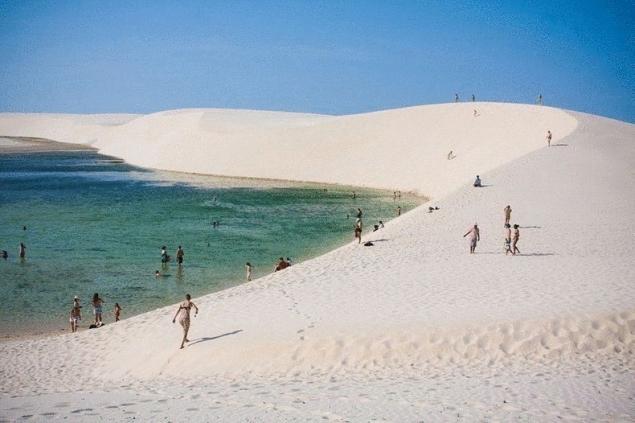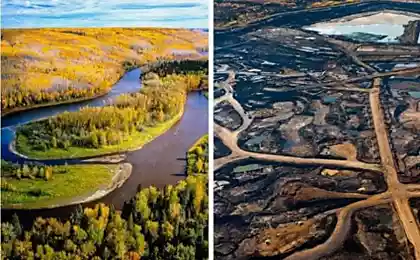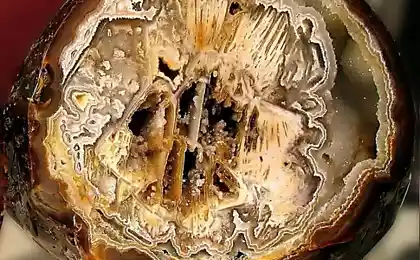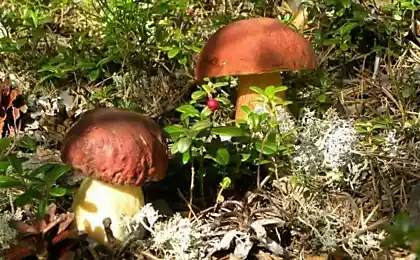443
Desert Lencois Maranhenses – the Kingdom of white Sands and rainwater lakes
The most unique desert in the world located in Brazil. It stretched for thousands of miles in the state of maranhão. The dunes there are dazzling white, and that was the reason of the name — Lençóis Maranhenses, in Portuguese – "bed Sheets of Maranhao". 2 June 1981, this place has acquired the status of national Park. The total desert area of about 580 square miles (approximately 1.5 thousand square kilometers).

Two rivers pass through the Lençóis Maranhenses. These rivers carry sand from the desert to the Atlantic ocean, keeping thousands of tons of a white precipitate. And only thanks to that on the North coast of Brazil, there are beautiful beaches with white sand: river "take out" the sand from the desert to the ocean, which returns it back onto land, forming a beautiful vacation spot.
But in the desert of the Lençóis Maranhenses sand remains in place. During the dry season, especially in October and November, powerful winds from the Equatorial Atlantic ocean "moving" sand mountain and back into the desert. It was at this time created those huge shaped dunes, which are famous in the Park.

At first glance, it looks like a picture perfect desert: miles and miles of sand with almost no vegetation. But it is not a desert – Lençóis Maranhenses receives about 47 inches of rain every year, making the Park too rainy to officially be considered a desert. According to generally accepted standards is considered to be desert terrain, where falls not more than 10 inches of rain per year. From January to June in Lençóis Maranhenses rains. The water forms pools in the valleys between the dunes and creates thousands of crystal clear lagoons. In July, some lagoon Park reach over 300 feet (91,4 m) in length and ten feet (3.4 meters) wide. Although these lagoons there are only a few months, they are not devoid of life. Those natural pools that are filled close to the rivers ultimately merge with the adjacent rivers, it creates unique channels for fish. And such fish as lepidosiren, spend the dry season dormant, burrowing deep enough into the sand to stay in the still wet dirt. When it comes to the rainy season, and appear to lagoon, lepidosiren "'re digging out" and lead a usual way of life in the newly formed bodies of water: feed on insects and other fish that swims in the lagoon from the rivers.
But the water world of Lençóis Maranhenses is an ephemeral: once the dry season returns, the Equatorial sun quickly heats the desert, causing the water level is reduced by as much as three feet (approximately 91 cm) within one month. The best time to visit the lagoon between July and September when they are most full and the temperature not too hot. By October, the winds in the region begin to grow, making the trek through the sandy landscape less pleasant.
To visit Lençóis Maranhenses, it is better to buy the ticket to são luís, capital of maranhão. You can also book a tour or take a ticket for public transport in the city of Barreirinhas, which is close to the national Park. From Barreirinhas tourists can reach the Park via a rented jeep, which cope well with bumpy terrain (even though the jeeps have to cross the river by ferry — a special barge, because the road in the desert lies across the river).
After the tourists got to the Park, they can explore the dunes and lagoons. But then you should use the services of a guide, because the Park is huge, and visitors, wandering alone, can easily get lost. The Park's website recommends ordering a minimum of two days tour to explore the biggest lagoon in the Park, Azul and Bonita. Visitors are allowed to swim in the lagoons, if the water level is high enough.

Interesting fact: the temperature of the water in some lagoons reaches 87° f (+30,5° Celsius).published
P. S. And remember, only by changing their consumption — together we change the world! ©
Source: mif-facts.com.ua

Two rivers pass through the Lençóis Maranhenses. These rivers carry sand from the desert to the Atlantic ocean, keeping thousands of tons of a white precipitate. And only thanks to that on the North coast of Brazil, there are beautiful beaches with white sand: river "take out" the sand from the desert to the ocean, which returns it back onto land, forming a beautiful vacation spot.
But in the desert of the Lençóis Maranhenses sand remains in place. During the dry season, especially in October and November, powerful winds from the Equatorial Atlantic ocean "moving" sand mountain and back into the desert. It was at this time created those huge shaped dunes, which are famous in the Park.

At first glance, it looks like a picture perfect desert: miles and miles of sand with almost no vegetation. But it is not a desert – Lençóis Maranhenses receives about 47 inches of rain every year, making the Park too rainy to officially be considered a desert. According to generally accepted standards is considered to be desert terrain, where falls not more than 10 inches of rain per year. From January to June in Lençóis Maranhenses rains. The water forms pools in the valleys between the dunes and creates thousands of crystal clear lagoons. In July, some lagoon Park reach over 300 feet (91,4 m) in length and ten feet (3.4 meters) wide. Although these lagoons there are only a few months, they are not devoid of life. Those natural pools that are filled close to the rivers ultimately merge with the adjacent rivers, it creates unique channels for fish. And such fish as lepidosiren, spend the dry season dormant, burrowing deep enough into the sand to stay in the still wet dirt. When it comes to the rainy season, and appear to lagoon, lepidosiren "'re digging out" and lead a usual way of life in the newly formed bodies of water: feed on insects and other fish that swims in the lagoon from the rivers.
But the water world of Lençóis Maranhenses is an ephemeral: once the dry season returns, the Equatorial sun quickly heats the desert, causing the water level is reduced by as much as three feet (approximately 91 cm) within one month. The best time to visit the lagoon between July and September when they are most full and the temperature not too hot. By October, the winds in the region begin to grow, making the trek through the sandy landscape less pleasant.
To visit Lençóis Maranhenses, it is better to buy the ticket to são luís, capital of maranhão. You can also book a tour or take a ticket for public transport in the city of Barreirinhas, which is close to the national Park. From Barreirinhas tourists can reach the Park via a rented jeep, which cope well with bumpy terrain (even though the jeeps have to cross the river by ferry — a special barge, because the road in the desert lies across the river).
After the tourists got to the Park, they can explore the dunes and lagoons. But then you should use the services of a guide, because the Park is huge, and visitors, wandering alone, can easily get lost. The Park's website recommends ordering a minimum of two days tour to explore the biggest lagoon in the Park, Azul and Bonita. Visitors are allowed to swim in the lagoons, if the water level is high enough.

Interesting fact: the temperature of the water in some lagoons reaches 87° f (+30,5° Celsius).published
P. S. And remember, only by changing their consumption — together we change the world! ©
Source: mif-facts.com.ua























